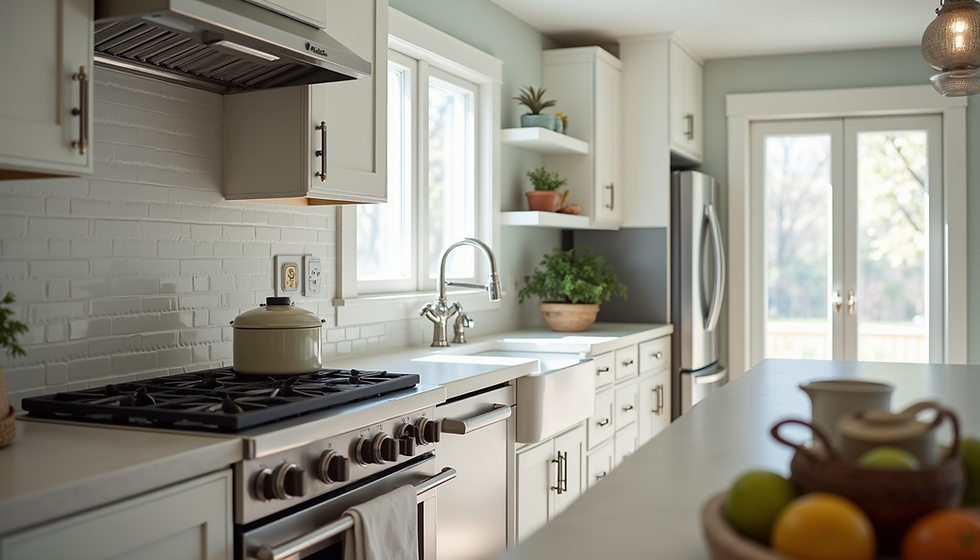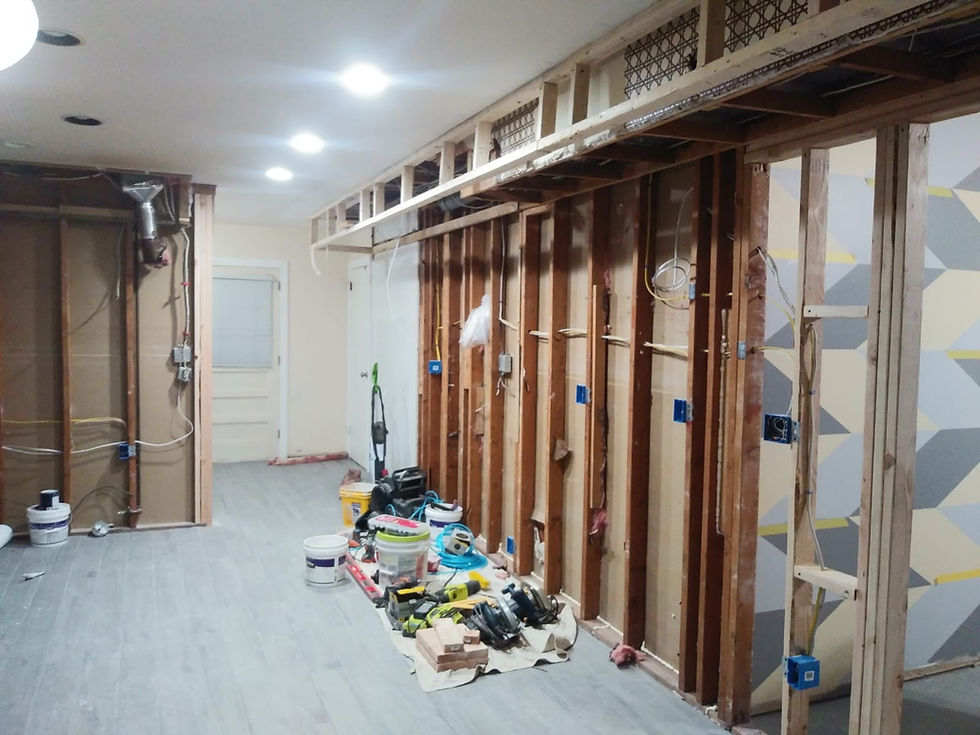Refinish or Replace Your Hardwood Floors A Guide to Making the Best Choice
- Jhon Jair Grisales

- Jul 17
- 3 min read

Hardwood floors offer a classic elegance that can elevate any home’s aesthetic. Yet, over time, they can endure significant wear and tear. Homeowners often face a critical choice: should they refinish or replace their hardwood floors? This guide will help you weigh your options, restore your floors’ beauty, and protect your investment.
Understanding the Condition of Your Floors
Assessing the condition of your hardwood floors is key to making an informed decision. Look for these signs of damage:
Deep scratches: If you can feel them with your fingernail, it's time to reconsider.
Visible warping or buckling: Floors should lie flat. Warping can be a sign of moisture damage.
Gaps between planks: This can indicate that the wood is shrinking, often due to humidity changes.
An uneven or wavy surface: This can affect the way your floors look and feel underfoot.
If your floors only show minor wear—like a few light scratches or scuffs—refinishing could be the better option. However, substantial damage may necessitate a full replacement. A consultation with a flooring expert can provide clarity on the extent of the damage.
The Benefits of Refinishing
Refinishing hardwood floors entails sanding down the top layer and applying a fresh finish.
Cost-Effectiveness
Refinishing is generally less expensive than replacing your hardwood floors. For instance, refinishing ranges from $2 to $5 per square foot, while new hardwood flooring can cost between $8 and $15 per square foot, depending on the wood type. This means refinishing can save you up to 60% on flooring costs.
Environmental Impact
Refinishing is often a greener choice, extending the life of existing materials. By choosing to refinish, you avoid adding to the waste that comes from discarded flooring. This decision can reduce your carbon footprint and align with eco-friendly home improvement practices.
Minimal Disruption
Refinishing your floors usually takes less time than a full replacement. Most projects can be completed in just a few days, allowing you to get back to your routine sooner. Traditionally, refinishing can take about 2 to 4 days, while a full replacement may extend to 1 to 2 weeks depending on the size of the space.
The Case for Replacement
While refinishing works in many cases, there are times when replacement could be the better solution.
Severe Damage
Water damage, pest infestations, or extensive structural issues may require replacement. For example, floors that have been damaged by water often require replacement to prevent mold growth and ensure safety.
Outdated Styles
If the existing hardwood doesn't match your home's decor, upgrading your flooring can refresh your space. Opting for a new wood type or finish can completely transform your home’s look.
Underlying Issues
Sometimes issues like mold or improper installation need addressing before aesthetic choices. Replacement allows you to take care of these problems and establish a proper foundation for new flooring.
Evaluating Costs
Cost is a primary concern for many homeowners. Refinishing typically incurs lower costs, averaging around $2 to $5 per square foot. However, factors like the current condition of your floors can affect additional repair costs.
In contrast, new hardwood flooring ranges from $8 to $15 per square foot. High-end options can even exceed $20 per square foot, making it essential to evaluate both immediate costs and long-term value. Investing in flooring can enhance your home's overall value, potentially yielding returns of 70% to 80% when selling.
Timing and Convenience
Consider how long you can manage without your hardwood floors. Refinishing requires vacating the space for several days, while replacement can take longer. Weigh your need for a functional space against the potential upsides of a new floor style or finish.
DIY vs. Hiring Professionals
Both refinishing and replacing hardwood floors can be DIY projects, but there are important distinctions.
Refinishing
If you choose to refinish the floors yourself, make sure you have the necessary tools, including a drum sander and finishing products. While DIY can save money, it demands time, effort, and skill.
Replacement
Replacement is best handled by professionals, especially when complex measurements or structural repairs are involved. Experts ensure proper installation, which is vital for preventing future issues.
Understanding Your Home’s Value
Quality hardwood floors can significantly impact your home’s real estate value. If you plan to sell soon, investing in new hardwood could yield better returns. According to a study, homes with updated flooring often sell for 5% to 10% more than comparable homes.
Making Your Choice
Choosing to refinish or replace your hardwood floors is a substantial decision influenced by many factors, such as the condition of your floors, costs, environmental implications, and your long-term goals for your home.
By evaluating each aspect and considering your lifestyle, you can make a well-informed choice affecting your home's charm and value. Ultimately, whether you refinish or replace, your decision should bring you satisfaction and enhance your space for years to come.




Comments